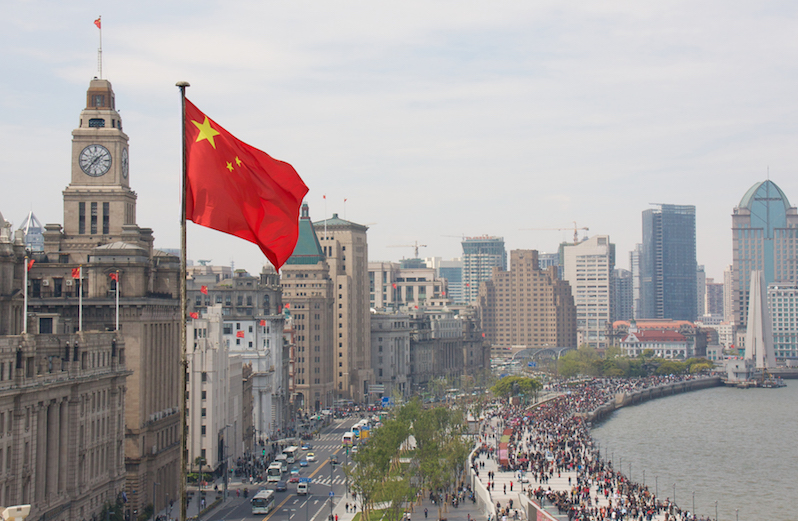
China’s State Council imposes new requirements to curb the abusive aspects of regulatory guidance documents.
As the Trump Administration seeks to pare back agency regulations, the Xi Administration in China is clamping down on guidance-type regulatory documents, frequently called “red-headed” documents due to the official letterhead on which they are issued.
The U.S. business community in China has long complained about these directives, conservatively estimated to number in the millions, and their inconsistent enforcement. Even though red-headed documents frequently impact the public’s rights and obligations, they have not been required to go through the increasingly transparent rulemaking procedures that apply to legally binding regulations and rules adopted at all levels of the Chinese government.
In May 2018, the Chinese State Council imposed a detailed set of requirements—the “Circular”—to govern the content and management of regulatory documents. In December 2018, the State Council mandated that agencies assess such documents’ legality prior to adoption. Moreover, the public may now ask Chinese courts to review the legality, under China’s Administrative Litigation Law, of regulatory documents that were the basis for a contested government action.
Regulatory documents are a category of what are called “normative documents” (guifanxing wenjian). These include, when used in the term’s broad sense, both legislative documents and non-legislative documents. Legislative documents consist of laws adopted by the National People’s Congress or its Standing Committee as well as State Council “regulations” (xingzheng fagui) and central departmental and local government “rules” (guizhang). Non-legislative documents include decisions and orders issued by government agencies, which are referred to literally as administrative normative documents (xingzheng guifanxing wenjian) but translated here as “regulatory documents,” in line with the State Council’s current practice. The formulation and handling of legislative documents are governed by China’s Legislation Law. In contrast, non-legislative regulatory documents are not subject to the Legislation Law, even though they are considered generally binding.
Regulatory documents are defined in the Circular as official documents, other than State Council regulations, decisions and orders, and departmental and local government rules, that are formulated by a government authority according to statutory powers and procedures, publicly issued, involve the rights and obligations of the public, and have a general binding force and applicability within a certain period of time.
Regulatory documents may impact the public by imposing user fees, standards, and certification requirements. Some of these documents have been characterized as “bizarre” for exceeding the bounds of reasonable administration—such as by forbidding employees from taking a vacation—and the State Council has long sought to reduce the volume of and better manage regulatory documents.
The Circular reflects the continuing struggle to manage regulatory documents. It mandates government agency compliance with its requirements through the use of language like “must” (bixu and yao) as opposed to “should” (ying), which is more typical of policy documents. “Significant” (zhongyao) documents must undergo five procedures that echo those required for rulemakings, although without comparable detailed procedural requirements: (1) assessment and appraisal of their necessity, feasibility and reasonableness; (2) widely soliciting the public’s opinions; (3) legality review; (4) collective deliberation and decision, to prevent arbitrary actions; and (5) public issuance as a condition of enforceability.
Although “significant” is not expressly defined, public opinion solicitation is required for documents that involve the public’s “vital interests” or have a “major” (zhongda) impact on their rights and interests. When proposed documents impact major public interests, in-depth investigations and studies through such channels as forums, expert appraisal meetings, and site visits must be undertaken to adequately obtain input from stakeholders.
The Circular prohibits government authorities from issuing, without a proper legal basis, regulatory documents that increase their own powers or reduce their statutory obligations. It likewise prohibits the issuance of documents that impair the lawful rights and interests of citizens, legal persons and other organizations or increase their obligations, or that infringe upon citizens’ personal, property, personality or labor rights.
Business regulation is also explicitly addressed in the Circular. Governments may not, without legal authority, undertake to do any of the following: establish new licensing requirements, penalties or compulsory measures, or add conditions for licensing; require duplicative or unnecessary certification; impose measures that eliminate or restrict fair competition; intervene in or interfere with normal business production and activities; or establish market access and exit conditions.
China’s new Foreign Investment Law specifies that regulatory documents relating to foreign invested enterprises must be formulated in accordance with the above requirements and published in a timely manner. A March 2019 State Council notice further urges central and local agencies to create a law-based, internationalized, and facilitative business environment by obtaining advice from affected enterprises, trade associations, chambers of commerce, and lawyers associations when drafting business-related regulatory documents.
All regulatory documents must also undergo a review, numbering, and registration process, and they must be periodically re-examined—including at the request of the public. As circumstances change, they should be “cleaned up” (qingli) through amendment or repeal. For example, the State Council released an instruction last June to abolish by the end of 2018 all certification requirements based on regulatory documents.
A further constraint on regulatory documents is afforded by the right, under the revised Administrative Litigation Law, to challenge them in court when concurrently seeking review of the legality of a government agency action based on such documents. This “incidental review” is an exception to the rule that Chinese courts do not have the authority to directly review the legality or reasonableness of State Council regulations, rules or regulatory documents.
In such circumstances, China’s Supreme People’s Court (SPC), in a 2018 judicial interpretation of the revised Administrative Litigation Law, instructed Chinese courts to review the legality of regulatory documents if they exceed the drafting agency’s authority, did not comply with procedures including for publication, or otherwise violate the law. Furthermore, incidental review of regulatory documents is appropriate if the documents conflict with the provisions of higher-level laws, regulations, and rules, or, without a legal basis, increase the obligations, or reduce the lawful rights and interests, of the public.
The introduction of incidental review of regulatory documents may help to gradually expand the scope of judicial review of Chinese agency action more broadly. For now, the State Council and the impacted public hope that the new requirements, bolstered by incidental judicial review, will curb the abusive aspects of regulatory documents and promote transparency and more law-based governance in China.




